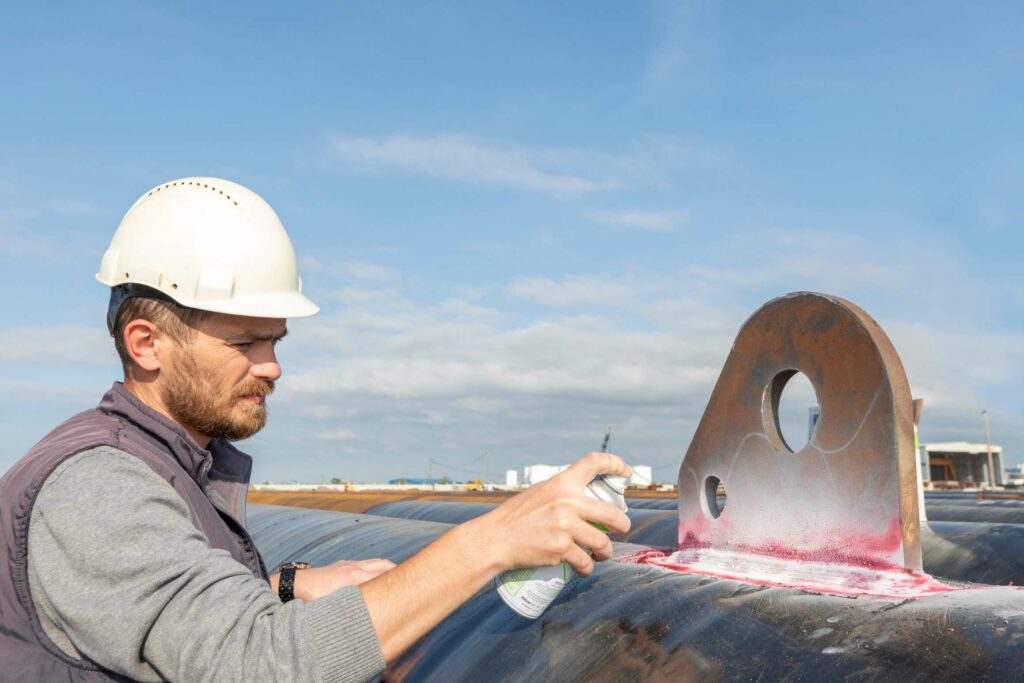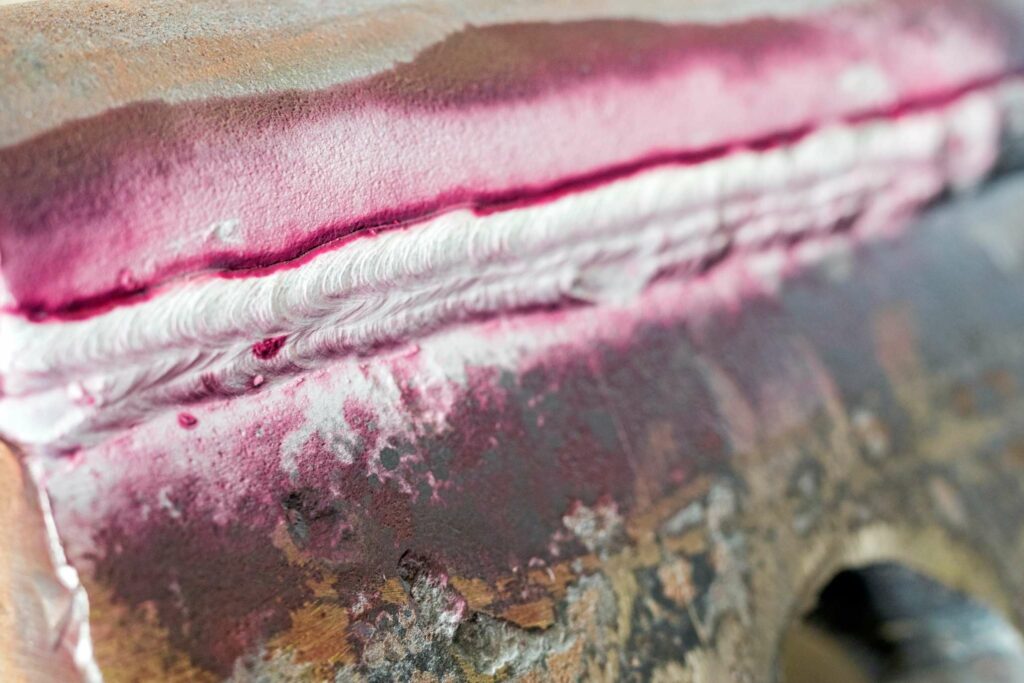A non-destructive testing method, Liquid penetrant inspection (LPI), AKA dye penetrant inspection, detects surface-breaking defects in materials such as metal, ceramics, and plastics.
LPI is a relatively simple inspection method commonly used to inspect welds, castings, and forgings. However, it is unsuitable for detecting internal defects, and the surface under inspection must be clean and without coatings or contaminants as they may interfere with the penetration of the liquid.
Our team of highly experienced certified professionals offers quality industrial liquid penetrant inspection in Grande Prairie and the Peace Region to ensure you get the information you need.
Our certified professionals have 15 years of experience in the NDT industry and practise precision and attention to detail on every job. Through ongoing training, our team stays current on all the latest codes and industry requirements, ensuring a high inspection quality standard.
Call us today, and we can ensure that the components in your project meet industry standards and regulatory requirements.


What is Liquid Penetrant Inspection?
In LPI, a liquid penetrant, usually a brightly coloured red dye, is applied to the material’s surface under inspection. The liquid seeps into any cracks, voids, or other surface discontinuities. After a predetermined amount of time, the excess penetrant is removed, and developer is applied to draw out the penetrant trapped in the discontinuities. The developer draws out the penetrant and visually indicates defects on the material’s surface. The indications appear as brightly coloured lines or spots as a visual aid, making them easy to detect.
What are the Uses of Liquid Penetrant Inspection?
Liquid penetrant inspection (LPI) is a widely used non-destructive testing method that can detect surface-breaking defects in a variety of materials, including:
1. Weld inspection:
LPI is commonly used to inspect welded joints for surface cracks, porosity, and other defects.
2. Castings and forgings inspection:
LPI inspects castings and forgings for surface cracks, inclusions, and other defects.
3. Machined parts inspection:
LPI inspects machined parts for surface defects such as cracks, porosity, and laps.
4. Automotive inspection:
LPI inspects automotive components such as engine blocks, cylinder heads, and crankshafts.
5. Pipeline inspection:
LPI inspects the surface of pipelines for defects such as cracks, corrosion, and pitting.
6. Pressure vessel inspection:
LPI inspects pressure vessels for surface defects such as cracks and porosity.
Overall, LPI is a versatile and widely used inspection method that can detect surface defects in various materials and components.
What are the Benefits of Liquid Penetrant Inspection?
Liquid penetrant inspection (LPI) is a widely used non-destructive testing method that can be highly beneficial. These benefits include:
1. Early detection of defects:
LPI can detect surface defects such as cracks and porosity before they become more severe and potentially catastrophic. LPI can save on costly repairs by helping to prevent equipment failures and reduce downtime.
2. Cost-effective:
LPI is a relatively low-cost inspection method compared to other non-destructive testing methods, making it a cost-effective option for inspecting large numbers of components.
3. Versatile:
LPI can inspect various components, including pipes, valves, pressure vessels, and other equipment.
4. Non-destructive:
LPI is a non-destructive testing method which does not damage the inspected components. LPI is a safe and practical option for inspecting critical components.
5. Easy to use:
LPI is a relatively simple and easy-to-use inspection method that does not require specialized equipment or extensive training.
6. Compliance with industry regulations:
LPI helps to maintain the industry-required regulations and standards, ensuring compliance.
Overall, LPI is a valuable inspection method in the oil and gas industry, effectively detecting defects and maintaining the integrity of critical equipment.